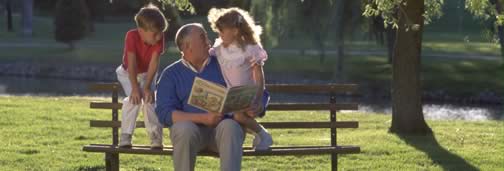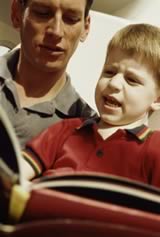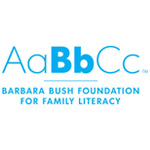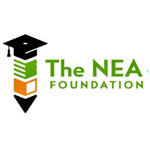
What is an Early Intervention Program
 An Early Intervention Program is a way to find students at highest risk of reading failure early enough to prevent it.
An Early Intervention Program is a way to find students at highest risk of reading failure early enough to prevent it.
The National Institutes of Health (NIH) state that 95 percent of poor readers can be brought up to grade level if they receive effective help early. The window of opportunity is during kindergarten and first grade.
The longer help is delayed, the harder it is for the child to catch up. If help is provided in fourth grade (instead of in kindergarten), it takes four times as long to improve the same skills by the same amount.
That is why the California State Board of Education and the Superintendent of Public Instruction stated in their report, Every Child A Reader, that a balanced and comprehensive approach to reading must contain:
“a powerful early intervention program that provides individual tutoring for children at risk of reading failure.”
The Barton System has been used successfully in many Early Intervention programs at public and private schools.
To learn how to find kindergarten or first-grade children at greatest risk, and how to use parents as volunteer tutors, read on.
Find At-Risk Students
The best predictor of a child destined for later reading failure is a child who lacks age-appropriate phonemic awareness.
Keith Stanovich
NIH Researcher
 More recent research has expanded that list to include 3 reliable early predictors: phonemic awareness, rapid naming, and auditory memory.
More recent research has expanded that list to include 3 reliable early predictors: phonemic awareness, rapid naming, and auditory memory.
All three are essential pre-reading skills. Children who are below age-appropriate norms in any one of those three areas are at extremely high risk of later reading failure.
Since these are pre-reading skills, children can be tested as young as age five – before they’ve been exposed to formal reading instruction.
Susan Barton recommends public and private schools screen all kindergartners or beginning first graders using the CTOPP-2. CTOPP stands for Comprehensive Test of Phonological Processing. The 2 stands for version 2. It is published by Pro-Ed Books, 800-897-3202, www.proedinc.com. Their part number for the CTOPP is 13080.
If a school gives the same test to all students, they do not need parental approval.
The CTOPP-2 has a 4 to 6 year old version. So you can now prove that a beginning Kindergarten student is already one year behind.
Students whose composite scores in either Phonemic Awareness, Rapid Naming or Auditory Memory are below the average range are at extremely high risk of later reading failure or reading disability.
In fact, their scoring manual states that a score below the average range in any one of those composite areas is a hallmark of dyslexia.
Find Volunteer Tutors
Once you’ve identified the at-highest-risk students using the CTOPP, you need to create a pool of volunteer tutors.
If your school has involved parents, recruit interested parents by making a presentation at a PTA meeting or by sending home a flyer.
Some school districts use high school students to tutor the first graders.
Others recruit volunteers from retirement and independent-living centers. Lonesome grandparents make wonderful tutors.
Just be sure each volunteer tutor can pass our Tutor Screening – to ensure they hear sounds well enough to be a tutor.
Then hold a tutor training day. Run the training day using our Facilitator’s Guide while showing our Level 1 Tutor Training DVDs. (Everything you need is included in the Site License version of the Barton System.)
Then match each tutor with a student and have them start tutoring on campus, twice a week – before, during or after school.
The Ten Steps
Here are the ten steps schools follow to start an Early Intervention Program:
Appoint a coordinator – a staff person or a volunteer.
Find the high-risk students.
Find the tutors.
Obtain a site license for the Barton Reading & Spelling System.
Conduct a tutor training session for Level 1.
Start tutoring.
Observe each tutor once.
Four weeks later, conduct a tutor training session for Level 2.
Observe each tutor once.
Students progress at different rates, so let tutors borrow training DVDs for the other levels.
For detailed information on each step, click here.
If you need help convincing your principal, click here.
Research on Early Intervention Programs
For a summary of the research on the importance and effectiveness of early intervention programs, click here.
Grants
If you use parents as volunteer tutors, your program may fall into the category of Family Literacy.
Barbara Bush Foundation
 Supporting family literacy grants.
Supporting family literacy grants.
www.barbarabushfoundation.com
Other grants are available for Early Intervention Programs, including:
PTA or School Site Councils
Many public schools have obtained funding through their PTA or school site council. The PTA can set up a designated fund. Parents can donate into that fund, which is used only for the early intervention program.
NEA Foundation
 Grant money can be used for innovative ideas that improve student achievement.
Grant money can be used for innovative ideas that improve student achievement.
Grants range from $ 1,000 to $ 3,000.
www.neafoundation.org/pages/grants-to-educators
School Grants Website
 This website offers grant writing tips for teachers, as well as a list of grants available for K-12 programs.
This website offers grant writing tips for teachers, as well as a list of grants available for K-12 programs.
www.k12grants.info





